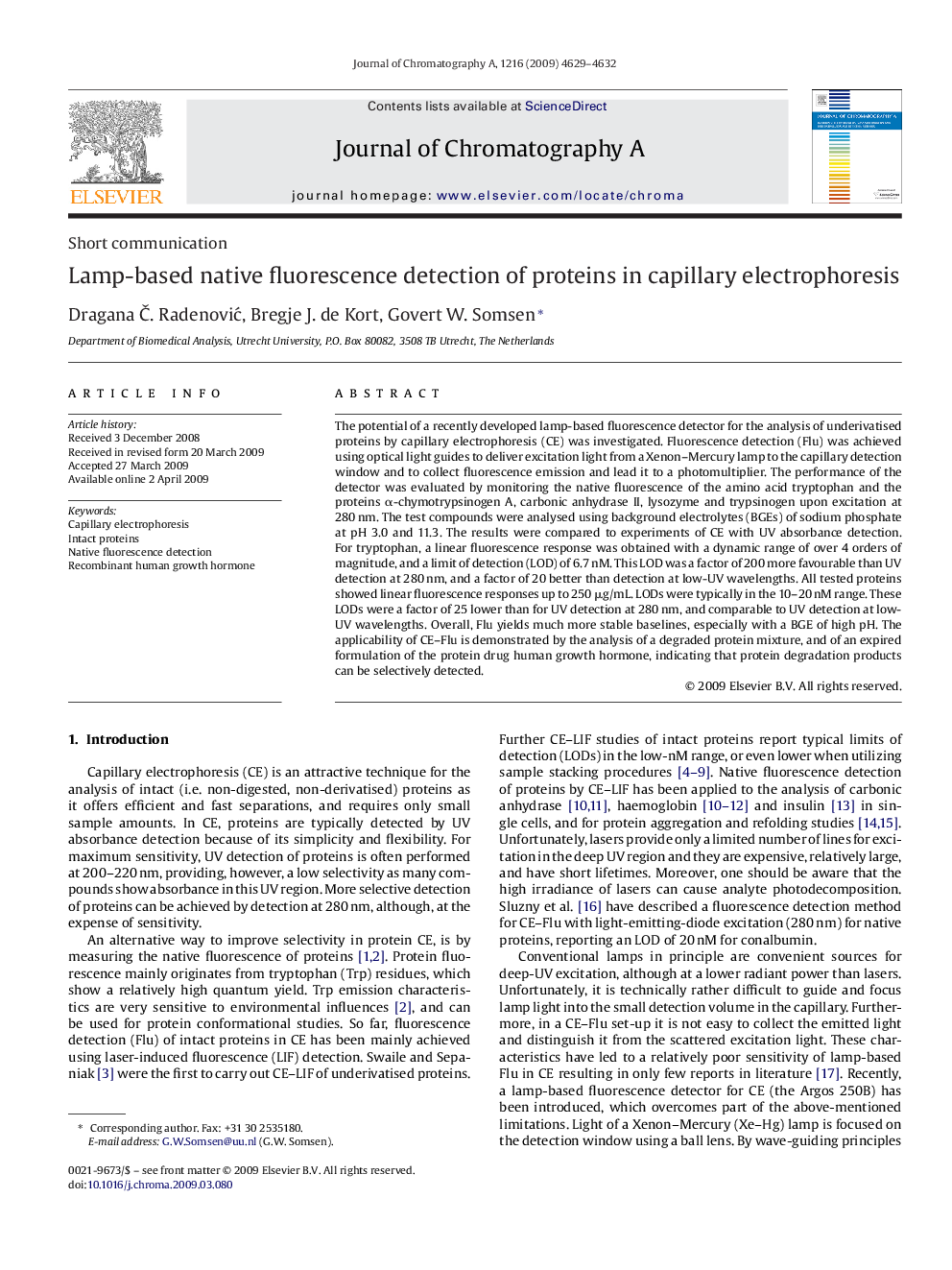| Article ID | Journal | Published Year | Pages | File Type |
|---|---|---|---|---|
| 1206308 | Journal of Chromatography A | 2009 | 4 Pages |
The potential of a recently developed lamp-based fluorescence detector for the analysis of underivatised proteins by capillary electrophoresis (CE) was investigated. Fluorescence detection (Flu) was achieved using optical light guides to deliver excitation light from a Xenon–Mercury lamp to the capillary detection window and to collect fluorescence emission and lead it to a photomultiplier. The performance of the detector was evaluated by monitoring the native fluorescence of the amino acid tryptophan and the proteins α-chymotrypsinogen A, carbonic anhydrase II, lysozyme and trypsinogen upon excitation at 280 nm. The test compounds were analysed using background electrolytes (BGEs) of sodium phosphate at pH 3.0 and 11.3. The results were compared to experiments of CE with UV absorbance detection. For tryptophan, a linear fluorescence response was obtained with a dynamic range of over 4 orders of magnitude, and a limit of detection (LOD) of 6.7 nM. This LOD was a factor of 200 more favourable than UV detection at 280 nm, and a factor of 20 better than detection at low-UV wavelengths. All tested proteins showed linear fluorescence responses up to 250 μg/mL. LODs were typically in the 10–20 nM range. These LODs were a factor of 25 lower than for UV detection at 280 nm, and comparable to UV detection at low-UV wavelengths. Overall, Flu yields much more stable baselines, especially with a BGE of high pH. The applicability of CE–Flu is demonstrated by the analysis of a degraded protein mixture, and of an expired formulation of the protein drug human growth hormone, indicating that protein degradation products can be selectively detected.
